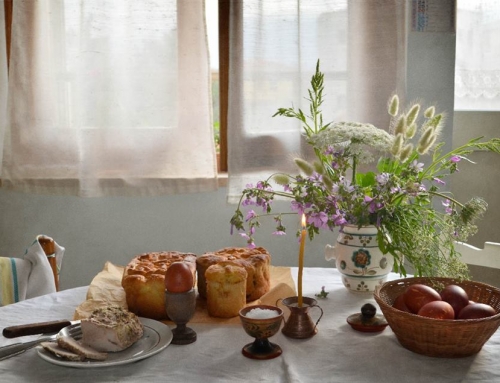Many think of vodka as the quintessential Russian drink, but it’s actually hot tea that defines Russian culture. In fact, Russians are obsessed with tea. As a nation, they drink a whopping 180,000 tons of tea per year.
For many Russians tea is more than just a drink, it’s a lifestyle. And unlike other cultures where tea drinking is all about the tea, in Russia tea drinking is usually a social event.
Tea drinking follows nearly every meal. And in some cases tea is the meal, paired with a gingerbread scone or other dessert. But above all, having a cup of tea is a time honored pastime that’s shared with friends and lasts many, many hours.
Russian Tea Culture
Russian tea culture spans nearly 300 years. Legend has it that a Mongolian ruler gifted tea to Tsar Mikhail, the first tsar of the Romanov dynasty. But it was during the reign of Peter the Great that tea really penetrated Russian culture. During that time, Peter signed an agreement that allowed free trade of goods between Russia and China. And by the 1720s China was supplying tea to Russia on a grand industrial scale.
The unique process of making tea is what distinguishes Russian tea traditions from other cultures. In China, Japan and Britain, the tea itself is the purpose of the tea drinking tradition. However, in Russia, tea is an excuse for a get-together and a long conversation.
The distinct art of brewing tea developed as new and exotic varieties were introduced from foreign lands. Mixing and layering tea to find just the right flavor is a big part of the culture. Going beyond just steeping tea, Russians developed a way to make the product go an extra mile with zavarka. Zavarka is a highly concentrated tea that’s made by adding a bit of boiling water to loose tea and letting it steep in a small teapot. Properly brewed and concentrated zavarka is the key to making any tea taste taste so darn good!
Today, gourmet teas are served in small teapots at swanky tea shops. But long ago, making tea in a Samovar was the tradition, and only way to go.
What is a Samovar?
Samovar is literally a self boiler. The large, urn-shaped container is made of metal and has a metal pipe running through the middle and a small spout at the bottom. To boil the water, the pipe was filled with fuel, the container filled with water and pine cones, charcoal and wood chips were set at the bottom and lit on fire. A small teapot with zavarka (tea concentrate) was placed at the top of a samovar to keep it heated with the passing hot air.
More than just a strange device though, samovar is an important symbol of Russian hospitality. Its an indispensable element of Russian tea culture.
Samovars are the earliest home appliances in Imperial Russia. It was also the center of attention, literally placed in the middle of a large table as families and guests gathered around and settled in for a leisurely conversation.
Etiquette Tips for Russian Tea Traditions
Here are a few etiquette tips on hosting, or attending, a Russian tea party:
When you’re visiting someone and they offer you a cup of tea, it’s a genuine gesture of hospitality. Refusing to drink tea with the host is interpreted as disrespectful. Russians are very straightforward people, so if they are offering you food or drink they see you as someone they can trust and would like to get to know better.
Tea is usually served after all the shots of vodka have been drunk. Regardless of what’s already been consumed at a birthday party or simple dinner, tea is served at the end of the event. Simply put, drinking tea concludes a get-together.
Social gatherings surrounding tea can, and usually do, last for hours. Conversations flow, secrets are revealed, and business deals are made over endless cups of tea.
It’s considered rude to serve tea without some sort of sweet treat. Gingerbread biscuits, waffles, cookies, chocolate candy, baranki (small crispy bagels) and homemade marmalades are typically served with tea. These sweets are what make Russian tea drinking so special.
- During Soviet times when sugar and sweets were scarce, tea was served with two cubes of sugar.
Many Russians love to drink tea out of glass cups nestled in metal tea glass holders.
If you’re looking to host an authentic Russian tea party, there is a large variety of teas and sweet snacks available at RussianFoodDirect.com.
And if you order by December 15th you can save 20% on all teas with promo code TC-HLD







Leave A Comment